
It seems that the indie area of the expo floor at PAX Aus gets bigger every year, and this year was no exception with sixty games on show. Some of these titles were chosen because of their unique ideas and exceptionally well-executed mechanics. Others were selected because they looked kind of odd, and Paddy’s into that sort of thing. So is Nick, in fact, who seemed to relate a little too closely to Regular Human Basketball. We’d make a joke about Ellis and Witch Thief, but we’re honestly afraid of what she might do to us. It would be near impossible to play every game in just the three days, so we sought out the ones that looked the most promising, and, of those, we’re presenting our favourites.
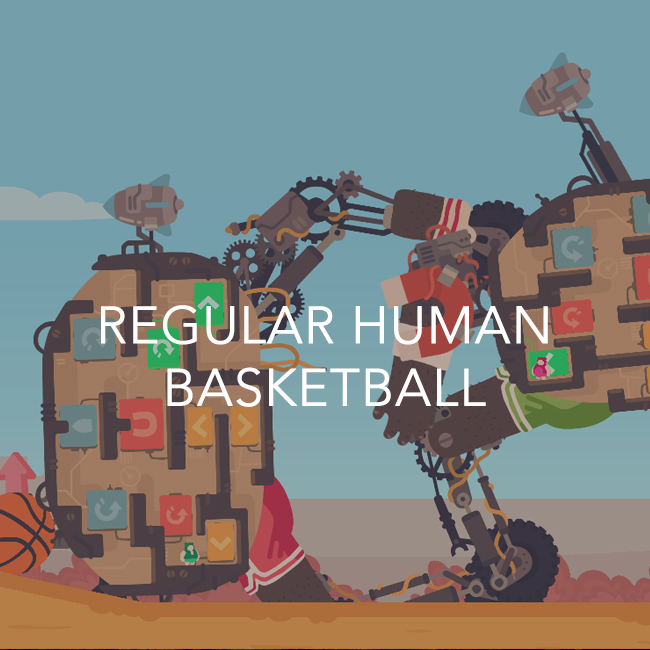
Chosen by: Nick Ballantyne
Developer: Powerhoof
Platforms: Windows, Linux, macOS
I live my life by one mantra: “Give me absurdity or give me death.” The screams of a thousand doughnuts are as much a symphony to my ears as Fucik’s Entry of The Gladiators. The texture of a hard-boiled hair-dryer is as enticing to my senses as an episode of Assassination Classroom. Truly, there is no greater pleasure in life than an experience that confuses as much as it satisfies, and no concept exemplifies this better than giant robots. Unless the robots are playing a sport where you throw a leathery ball into an elevated metal ring, then we’re just talking about Regular Human Basketball (RHB).
Unassuming, ridiculous and thoroughly enjoyable, RHB surprised me as very few games do these days. The game’s simple mechanics have been polished to blinding levels of shine, so even without much variety between matches, it feels like a slam dunk every time. There’s also a surprising amount to dig your teeth into because of the game’s physicality. You might have a firm grasp of how to control your robot, but unless you have perfect timing, chances are the butterfly effect will kick in and you’ll be awkwardly humping your opponents. There’s an elegance to the game’s simplicity, but it’s the absurdity of the game that’s kept it in my memory banks.
Don’t get me wrong, this is a game that has had some serious thought put into it, but it’s a game about playing basketball with giant robots. Just on a conceptual level, the game reeks of casual humour, disregarding whatever notions of seriousness you expected and replacing them with raw fun. The game even looks funny, with little blobs of men making up each team, and who thought the robot should be egg-shaped!? It’s gloriously silly and considering you can play it for free, it’s well worth a mention here.
You can check out Powerhoof’s website here, or play the game on itch.io.
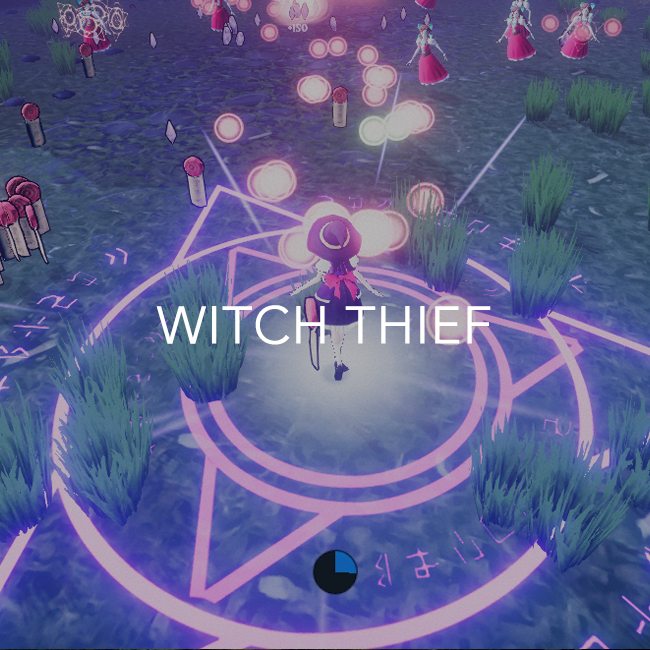
Chosen by: Ellis Longhurst
Developer: Cardboard Keep
Platforms: Windows
“Witch Thief is a zany 3D bullet hell single-player game, in which players take control of the titular witch who is on a quest to steal all the magic she possibly can,” explained Witch Thief developer Tim Bermanseder. “There’s a lot of ducking, dodging, and weaving through very dense bullet patterns to try reach and defeat the enemies you encounter.” At the PAX Aus indie section, Witch Thief caught my eye for a couple of reasons. Firstly, it was one of few 3D games on display. Secondly, it was one of few games not to employ a top-down view or static camera. Other PAX games aside, both these elements made Witch Thief unique for a bullet hell game.
Tim notes that the choice to use a third-person over the shoulder view required some interesting design considerations for the rest of the game. “Player awareness of the whole battlefield is a trope of classic bullet hells. As this is a 3D game, when you turn around, the vision that you previously had is obscured. We had to very carefully balance the camera with the level design.”
I played through the first of eight completed levels and was impressed by the quantity of different enemy projectile patterns and the sensitivity of the controls. The witty, self-aware dialogue and banter between protagonist and enemy were also highlights – Tim points to Undertale as an inspiration.
You can check out Cardboard Keep’s websites here, or check out Witch Thief’s Steam page over here. Witch Thief is currently slated for a early-to-mid 2018 release.
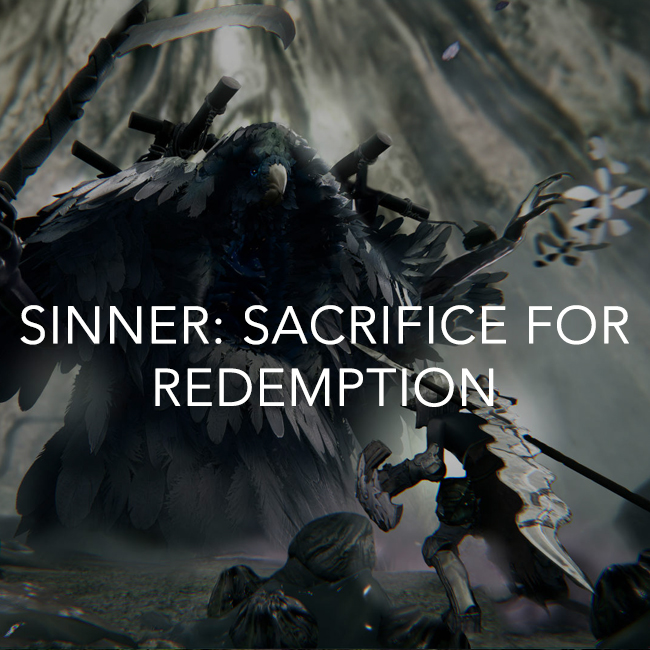
Chosen by: Patrick Waring
Developer: Dark Star
Platforms: Windows
The Soulsborne series created by From Software is so infamous for its difficulty that “Soulsbourne” is actually considered a genre title in some areas of the gaming community. It’s certainly how I’d describe Sinner: Sacrifice for Redemption, created from the apparent shower thought of, “What if Dark Souls actually punished you for winning?” Sinner comes from studio Dark Star in China’s burgeoning indie scene because, apparently, developers in the west have forgotten what “hard” truly means when it comes to gaming. On the surface it might look like a Dark Souls clone. There’s even a lot of similar visual detail going on to the series it clearly takes influence from. Once you start playing, however, it has a lot to offer on its own merit.
The game is set up as a series of boss fights that require you to sacrifice (hence the name) a part of your character just so you can face each one. This might be your armour, shield, weapon, even certain abilities until you’re eventually facing the final boss with nought but a loincloth and a shard of wood. Each boss also represents a deadly sin (again, it’s in the name), which makes the sacrifice and absolvement theme clearly connected to the gameplay. The combat, of course, is difficult and demands your constant attention to even minor telegraphs sent by each boss about their movements but it’s still engaging and fun. I also like the idea of empowering players through honing ability, instead of giving them power crutches as they progress, then putting those abilities to an incredibly harsh test.
Keep in mind that this is just my first impression, it’s not a full-blown review. Seriously, keep that in mind, this is not a review. But I’m already far more interested in the idea of a game whose story that, while not immediately obvious about its underlying narrative, is actually easy to follow, instead of being a cryptic mess. If I’m going to be tearing my face off in frustration just by playing the game, I at least want the reward of a story I can understand without seven different wikis. Sinner looks like it can give me that, and I’m keen.
You can check out the page for Sinner: Sacrifice for Redemption on Another Indie’s website over here, or check out the game’s Steam page here. Sinner: Sacrifice for Redemption is currently slated for release some time in 2018.
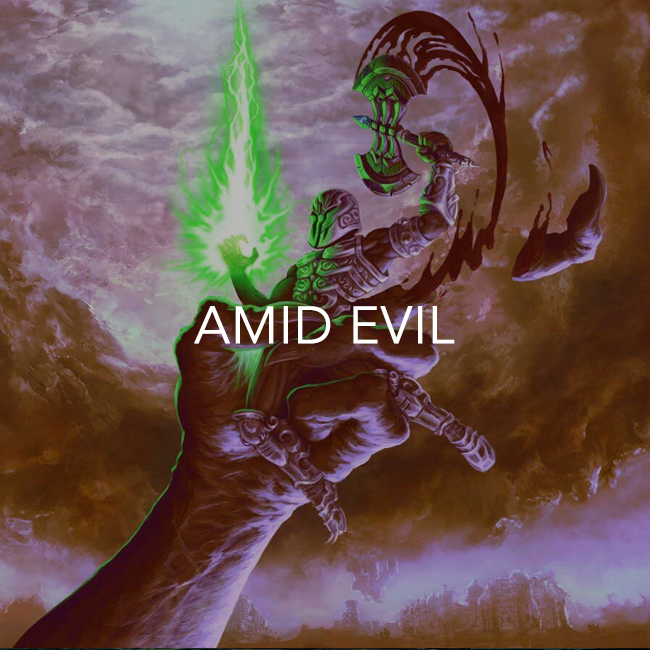
Chosen by: Nick Ballantyne
Developer: Indefatigable
Platforms: Windows
Us ‘90s kids had it too good, let me tell you. It was a golden age of shooters, with Hexen, Quake and DOOM showering us in gore and mazes like it was just another day at Buffalo Bill’s house. Modern FPS games just don’t have that same reckless attitude anymore, and attempts to recapture that essence have been… Well… We know my feelings on Strafe. We had DOOM (2016), but even that struggled to shake off the shackles of progression systems, so what hope is there for the shooters of old? Fret not, humble twitch junkie, because Amid Evil knows exactly what those old games were all about, and it’s bringing it to the new age with a vengeance.
It’s high time a game like Amid Evil showed up to show everyone else how it’s done. No procedural generation, no progression system, no generous cover systems, just non-stop running and gunning with an arsenal only a god could dare wield. When it was pointed out that I was shooting literal planets (and the occasional sun), my curiosity became a fascination. Even the level design screams old-school sensibilities, with maze-like corridors and large open spaces dominating the game’s levels. Capturing the feel of old games is all well and good, but we’re living in the 21st century, and the game knows that modern audiences expect something a bit more nuanced.
Amid Evil feels inspired by the ‘90s but not stuck there. AI tactics will allow enemies to pursue you across the map, even hopping off balconies if it means your demise. You also have a soul gauge that powers up your weapons when filled up. Instead of shooting small bursts of energy from your trident, you’ll fire a continuous stream of lightning, and each weapon has its own variation. The level design also won’t require a degree in cartography to navigate so you won’t end up being stuck looking for that last key for half an hour. It all sounds like a great take on the shooters of yesteryear, and it even has cheat codes. Colour me hype.
You can check out the Steam page for Amid Evil here, where it’s elusive developers Indefatigable have it slated for a release period of “SOON™.”

Chosen by: Ellis Longhurst
Developer: Papadar
Platforms: Windows, macOS
As a self-proclaimed enthusiast of lexicon, I never miss a chance to geek out with someone about a portmanteau. Fortunately, Aladar Apponyi’s Eatvolve had more to offer than just a snazzy title. The game is essentially Spelunky crossed with a cannibalistic version of Pokémon wrapped up in nostalgia-inducing pixels. Aladar offered a more mainstream pitch. “Eatvolve is a simple roguelike platformer with randomly generated levels. You jump on other creatures heads to eat their body, and advance your own body and abilities.” The idea came from a Game Jam where the theme was ouroboros. Aladar has affectionately been calling the game an “eat ‘em up.”
Puzzle solving is a large part of the game. You will be conferred the visual appearance and abilities of the last three creatures you consumed – specific skills are required to break obstacles or reach new platforms. Part of the joy of the game is discovering new creatures and creating your favourite amalgamation.
“Each life might last anywhere from 5 seconds to 30 minutes. If you play for 30 minutes, you could reach the end of the game,” explains Aladar. “However, you would have to have played through a few lives in order to learn the dangers to avoid and the combinations to use.”
You can check out EatVolve’s website here, or play the game on itch.io. The game is updated monthly, with an intended completion date of mid-2018.
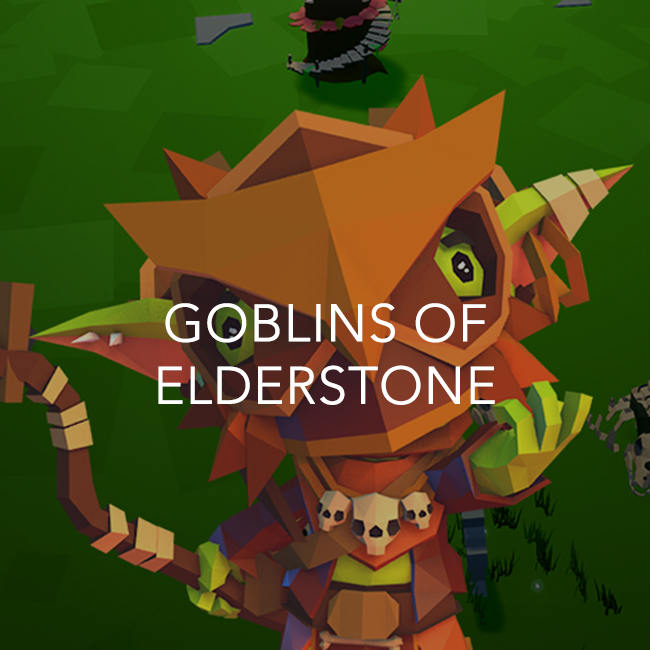
Chosen by: Patrick Waring
Developer: Lost Goblin
Platforms: Windows
I like to think that I’ll play games of any genre, but that doesn’t mean that there aren’t genres I love. Base management sims are a weird favourite, and that’s just one of the many reasons I’m so drawn to Goblins of Elderstone. I’ve been into D&D and various forms of fantasy fiction since I was a kid, and I also like playing the villains. I’m also really into stories that portray the villains as relatable, even understandable figures, and Goblins of Elderstone has all of this in the one game. Looking over a small, flourishing village of Goblins, you help these classically “evil” creatures to grow as a culture, defending themselves from Humans, Dwarves, Elves, the environment, themselves… Goblins die in lots of ways.
The game takes a lot of fantasy tropes and turns them into actual gameplay mechanics, not just simple references, to really make the game feel alive. The Goblins are troublemaking vagabonds that will literally burn their own houses down if left unattended for too long. They’re tribal, and a whole pantheon of Gods have been worked into what your tribe worships, and how that affects the gameplay. In Base Management/God Sim style, you’re also spending your time actually constructing your village, watching the Goblins work to make a sprawling web of buildings, towers and bridges. The entire thing is just really cool, bringing some truly old-school fantasy vibes to a modern genre.
Of course, there’s also the appeal of just watching it all fall to shit. I will absolutely bring my little Goblin village all the way up to being a mighty Goblin Empire, with a capital “E,” ready to purge the surrounding lands of non-Goblin kind. But right before that last bit, I’ll be saving my game so that I can first let them all get hammered and angry at each other, watching the entire thing burn to the ground while ignoring their pleas for help… What? Don’t look at me like that. It’s the fantasy equivalent of putting them in a pool and taking away the ladder, we’ve all done it. Or something like it. Seriously, don’t judge me.
You can check out the website for Goblins of Elderstone here, or you can see the Steam page for the game here. The game is currently available in Early Access.

Chosen by: Nick Ballantyne
Developer: Defiant Development
Platforms: Windows
I only managed to play Hand of Fate earlier this year, but I was instantly drawn into it. The mysterious tension between yourself and the dealer is as mysterious as it is motivating. Ain’t no face-bandana wearing motherclucker going to beat me at a card game, but his charming taunts make him an endearing character. Fast forward a few months and whose ravaged face should I see on the expo floor but the dealers! I’d forgotten entirely that Hand of Fate 2 was coming, but I wasn’t letting that dealer get the satisfaction of escaping my opinion.
Yet again, the gamemasters at Defiant have made a game I want to lose myself in. Beyond the dealer (although I could write a million words on him alone), the game has seen a number of improvements. Companions will assist you in battle and obey your orders to smite whoever gets in your way. There’s a slew of new challenges for you to attempt across a map that looks so perfectly suited to the atmosphere of the game it almost brought a tear to my eye. And, of course, there are new enemies and encounters to contend with, but those pesky goblins are still as present as ever.
While the game feels renewed, it also feels very familiar. The UI has had a zhoosh, but it’s ultimately more of what made the first game great. The combat feels smoother and more natural, and there are a few more mechanics to play around with, but it’s still a quick affair to keep the game moving. Even the cards have retained their folklore stylings, now there’s just more to play with. I can’t wait to get my hands on HoF2 and show the dealer who’s really in charge of the game, but that will require learning how to make cards float around first.
You can see the website for Hand of Fate 2 over here, or see the Steam page for the game here. Hand of Fate 2 will be released on November 8th, 2017.

Chosen by: Ellis Longhurst
Developer: Juicy Cupcake
Platforms: Windows, Xbox One
“Brief Battles is a local multiplayer, couch game in which you’re fighting your friends using super-powered underpants,” says Andrew Freeth of developer Juicy Cupcake. “Do you want to play?” I need no second invitation. The game had piqued my interest from across the show floor. It looked like Super Smash Bros. crossed with Captain Underpants. Four of us sit down and spend ten minutes shooting ice beams, running through portals, and trying to pop our opponents’ anthropomorphic cape-and-underpants wearing balloon character. We’re all racing to grab the underpants we like best. Underpants serve as power-ups that each confers different abilities on the player. It’s so much fun.
Brief Battles takes the prize for the PAX Aus 2017 game I enjoyed playing the most. I’m sure some people would be turned off by what they perceive to be base humour, but it actually just serves as a novel vehicle for delivering a pretty polished local multiplayer fighting game. The graphics are slick, the controls are intuitive, and the battles are… brief. Unlike most fighting games, players can grip the walls and ceiling, allowing for a range of different strategies to be employed. Dropping from the ceiling to flatten an enemy, or dashing up the wall to escape a fireball saved my life on many occasions.
Freeth mentions that Towerfall, Overcooked, and every other couch co-op game were inspirations for Brief Battles. You can tell that the developers, Juicy Cupcake, are lovers of local multiplayer games. If you love them too, Brief Battles is a must play.
You can check out the website for Brief Battles here, and you can support the game on Kickstarter at present.
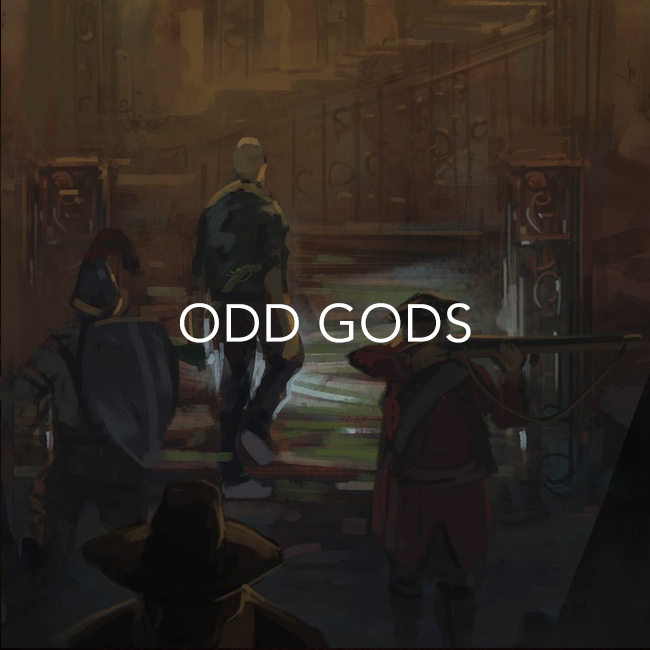
Chosen by: Paddy Waring
Developer: Inn Between Worlds
Platforms: Windows
I’m a nostalgic person at heart, and things that I loved in my childhood being brought back to the modern day is something that will likely never stop making my happy. (Or incredibly angry, depending on who is bringing it back, and how. I’m a picky person.) I grew up in the ’90s, and on some level I actually relate to a lot of the nostalgia that gets thrown around from that era. I don’t relate to the attitude of putting it above everything else because, you know, I have a personality. The ’90s had some cool pop-culture stuff, though, and is arguably when various communities and scenes began taking off. So, what if you took everything that made the ’90s such a golden age in the eyes of many and tried to find a way to connect them all narratively? That’s kind of what Odd Gods is doing.
Your classes are based on subcultures of that time, your dialogue and mannerisms are a reflection of that time, and not in a, “teehee, let’s poke fun at the ’90s,” kind of way. There’s an earnestness about it that makes it silly just by remaining faithful to how we acted back then. Looking back, we’ll always cringe a little at who we were. The whole “ironically ’90s” bit has been done to death, however, so to see a game actually try to embody the period as opposed to lampooning it is kind of refreshing. Nostalgia isn’t the only appeal to this game, I should add, it’s just what attracted me to it. There’s also some time-space hopping shenanigans, wandering around dilapidated, maze-like corridors and loosely connected rooms in a floating void between worlds.
The demo has you pair up with someone from some privateer-type from a vaguely renaissance period of (presumably) Europe, then pits you both against servants to a demon parody of Johnny Walker. Yes, I do mean the liquor brand. Combat is turn-based strategy, as well, though both your actions and the enemies’ actions happen all at once at the end of each turn. It’s an interesting idea for a game mechanic, and though the game looks rather rough at the moment, there’s a lot of potential beneath the surface. I’ll be watching the development of Odd Gods with keen interest in the future.
You can check out the Odd Gods’ website here, and follow the game’s development on Twitter or Facebook.

Chosen by: Team Pick
Developer: TinyBuild
Platforms: Windows, Xbox One
Here we are, the crème de la crème, the game decided on by our, ahem, “dedicated” writers at PAX Aus 2017 as being the best indie game on offer. Considering that they weren’t a part of the PAX Rising area, the part of the expo floor dedicated to indie developers, they drew quite a bit of attention. If you’re not familiar with Hello Neighbor, it’s about moving into a new house across the road from a creepy, eccentric neighbour, and his demented home. Naturally, after seeing some strange occurrences, your objective immediately becomes breaking into that Devil’s funhouse of a building to spy on him, while avoiding his detection. Each time he finds you and, rightfully, ejects you from his home, he changes his behaviour and the defences around his home in direct response to the ways you’ve been attempting to get in.
The concept in itself is bizarre and creepy, and it’s difficult to tell who the antagonist is supposed to be. Is it the neighbour, who is clearly up to something nefarious, but in the privacy of his own home and without an apparent victim? Or is it the player character, a concerned neighbour, who decides the best course toward justice and the truth is breaking and entering, followed by an immense invasion of privacy? Maybe no one’s the hero because who the hell breaks into someone’s house and rifles through their things while the owner is still home, and who keeps a functioning roller coaster of death in their house? We think Satan is actually a part of the canonical story of this game, we’re just not sure how.
Mechanically, the game is straightforward to play, and your biggest obstacle is fighting your own impatience and panic more often than not. Yet the effect it has on how you feel is huge, draping a feeling of dread over you while you traverse from a child-like, cheery atmosphere into death traps and literal cult chambers. The game shifts from light to dark at the right times in the best ways, and we can’t wait to see what the finished version will be like at the end. We’ll be peering through TinyBuild’s office windows and keeping an eye out until then.











